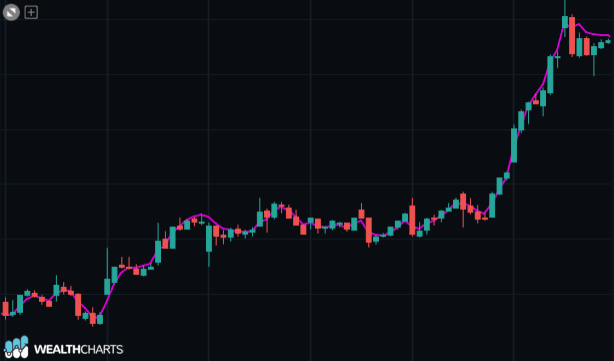Categories
About UsHow to get startedAccount AccessBrokers and TradingScannersResearch ToolsCommunityStocksOptionsFuturesAlertsTriangular Moving Average (TMA) - Indicator Formula
The triangular moving average is a trend following technical indicator that lags the market because it is calculated based on past prices. This average is different than the exponential or weighted moving average that puts more weight on recent prices. The triangular moving average is averaged twice and the majority of the weight is placed or assigned to the middle portion of the data.
Like all moving averages, the drawback is that they are lagging indicators due to the fact that they are based on prior data. The stock can move sharply before it can show the trend changing. A shorter-term moving average has less time lag than a longer one.
Calculation:
SMA( t ) =
P( t ) + P( t - 1 ) + ... + P( t - n ) / n
TMA( t ) = SMA( t ) + SMA( t - 1 ) + ... + SMA( t - n ) / n
where:
P = Price
SMA = Simple Moving Average
n = time period
